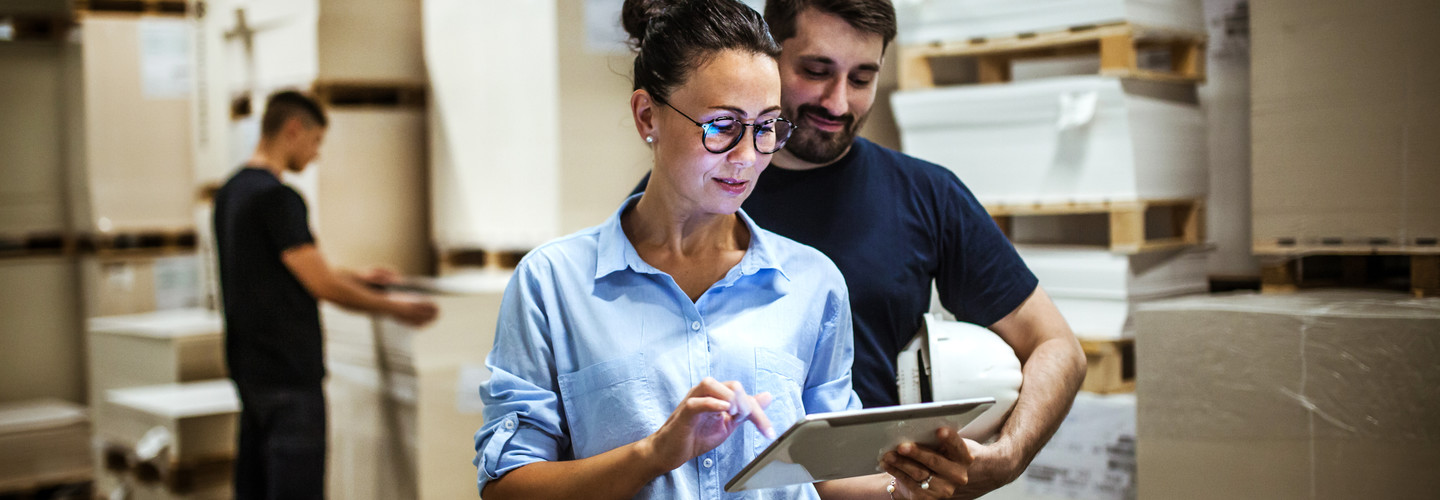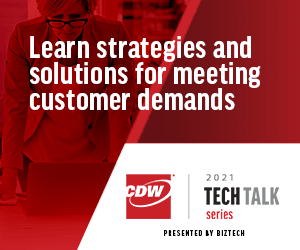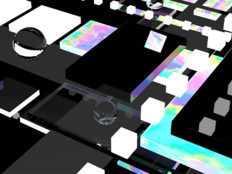Organizations and their employees have been living through a whirlwind of change since the beginning of the pandemic. Initially, IT departments were pushed to find remote solutions to connect workers for what we hoped would be a temporary situation.
However, as time goes on, the remote and hybrid environments many organizations have created are taking on a more permanent status. With workforces more distributed, technology is serving the vital purpose of facilitating innovative communication and collaboration.
Joe Hasenzahl, senior manager of B2B mobility at Samsung, joined CDW’s Tech Talk webcast to discuss some of the changes we're seeing in the workforce, and how they are affecting the way work gets done.
WATCH THE WEBCAST: Unlock the exclusive Insider video to learn more about how IT can assist with collaboration and communication.
Some Tech Changes Have Been Different for the Retail Sector
Hasenzahl noted that office-based organizations have had to make changes and adjustments, but said that changes in the retail industry have been even more significant.
“55 percent of the 21 million retail jobs are hourly or basic stores, and that changes the dynamic dramatically, because these jobs were entry-level and never really taken that seriously until they became essential,” he said. “That was a significant pivot in not only the nature of the work but what we did to support that.”
Hasenzahl pointed out some key differences between changes felt in the retail sector versus in other sectors. “Out of those 55 percent of workers that are in stores, almost 50 percent of them are 16 to 34 years old. That’s a different generational mindset. I don’t bring it up because we’re talking about Gen Z and millennials. I bring it up because these people are digital natives,” he said. “So, they’re aware that the device is important, that it has to be charged, has to be maintained. You can’t do what you need to do if the device isn’t functioning. So that’s really a big insight into how we’re addressing new work.”
Communication Was a Major Challenge for the Retail Industry
Hasenzahl emphasized that communication was the first issue to require addressing in the retail industry after the pandemic hit. “The first toolkit that becomes critical when you’re deploying mobility within hourly environments is peer-to-peer communications, just getting associates to be able to connect with themselves and each other. Then, corporate communication, getting messages quickly distributed to work teams, is the No. 1 priority here,” he said.
“Having a mechanism that allowed leadership to communicate to their stores, especially when they're remote, and at the same time allowed associates to connect with one another, were big boosts to associate productivity,” he continued. Hasenzahl said associate productivity is becoming one of the top five areas of spending within retail. “They’re continuing to invest in technology, in customer experience and retention for inventory management. But what’s starting to bubble up is associate productivity. You can’t help but draw a line that, as we learn to distribute devices to associates, that’s helping this situation.”
Register below for an upcoming CDW Tech Talk, held Tuesdays at 1 p.m., to hear from IT experts live.
Retail Companies Must Use Tech to Enable Employee Communication
Hasenzahl spoke about his experiences working with retail companies to help managers give associates the devices and skills to handle task management. Sometimes that involves finding an interface users will find familiar.
“Whatever we can do to facilitate the adoption of these tools and make them second nature to people in our workforces is going to be a big deal. Now of course, this implies that you're investing in devices, that you're investing in a network, because fancy devices without a network to back them up are frustrating, not fun,” Hasenzahl explained.
He acknowledged that new systems of communication can’t be deployed quickly, and they frequently include stakeholders who haven’t traditionally been involved in IT decision-making, including human resources departments. “Associate attraction and retention is such a big problem, not just in retail but across the board. And we’re talking about severe impact to the bottom line with hours of lost productivity — 250 million hours of productivity lost a year as a result of turnover.”
More from BizTech: Learn about the technology being deployed at stores.
Devices Are a Big Part of the Answer for Retailers
Hasenzahl claimed some of that loss could be eased by technology, through providing employees with the right equipment. “We’re seeing ruggedized enterprise devices mirroring consumer devices. That’s what we’re seeing and that’s what we like. We’re not talking about single-use, multipurpose clunky devices with lots of programmable buttons. That’s not what we’re seeing.”
At Samsung, Hasenzahl said, “We have people issuing devices to attract and retain associates, and they can take these devices home. This is your own personal device, and so this is something that’s going to solve a problem with a customer in a store, let you watch Netflix on a subway or play a trivia game in a bar.”
The capability of devices has advanced greatly in recent years. “All of a sudden, cameras that are used for video chats and for taking pictures are used for barcode scanning and for AR overlays. We’re starting to see the repurposing of this hardware to fit use cases within retail. Near-field communication for mobile payments can now take a mobile payment. Gyroscopes that start counting steps are really relevant within retail, because now we understand where the friction points are. How many steps associates are taking a day is important to us because they may indicate that there’s a problem with the process.”
Hasenzahl also pointed out the ways Bluetooth proximity can help companies understand when devices are all together, or help pinpoint a device’s location so the associate can be pointed in the right direction for picking a product. “This smashing together of consumer and enterprise is going to be a big deal, and it’s going to get closer and closer together as we progress,” he said.
Healthcare Has Also Benefited from Advances in Communication
During the webcast, Chris Acereto, IT infrastructure manager for Victor Community Services, and Wesley Bischoff, executive account manager at CDW, joined the conversation to share their experiences improving communication tools for a mental health service during the pandemic.
Acereto explained that Victor Community Services is composed of two agencies. “We have bigger treatment centers, which provide residential homes for youth; sometimes, they require additional supervision to help with mental, emotional and behavioral challenges. Then we have Victor Community Support Services, which provides mental health and family support services throughout various communities that we serve. We have a wide array of programs that assist the children and their families in their local homes as well as their school environments.”
The organization recently completed a network overhaul with the help of CDW that has alleviated some of the challenges it had been facing. “Some of the challenges we had were keeping up with the demand from the business, keeping up with their request to be more cutting-edge, being able to deliver services faster to our kids and being able to support our communities.”
Acereto said the center realized it needed to reconfigure its network to enable tools that would be useful to staff and empower a vision for the future. “A lot of it is in-house applications that we develop in the U.S. to collect data on our treatment plans. But also, what does this look like for us three to five years from now, knowing that there has to be some kind of cloud engagement, making sure that we’re able to facilitate those workloads when we’re ready to get to that stage?”
WATCH: Learn more about building security into your infrastructure.
Corporate Culture Has a Direct Impact on Business Outcomes
Bischoff explained how CDW was able to step in and update the organization’s aging infrastructure. The data center and some even older virtual desktop infrastructure software were moving toward the end of their life cycles. “Rather than keeping that around, they wanted to have a conversation around what the landscape looks like nowadays. That’s something that we were able to talk through and help guide through as we tried to determine what fit the organization’s requirements.”
Acereto attested to the benefits of the network overhaul. “The stability aspect has been something that everybody has been able to visually see. We did have those issues where there was some unknown stability with the VDI — the performance, the delivery, internal application stuff, our files, everything. Once we got into new hardware, once we increased our bandwidth, everything just started performing so much better.”
With regard to VDI, Acereto said flash-based storage has allowed the organization “to deliver those desktops to our end users as fast as possible. Moving to the flash-based storage and rebooting the network with less constraints, staff is much happier with the way things are performing internally. It’s one of those things where they notice a difference, but they don’t really know what really went into it because it’s all on the back end.”
Follow BizTech’s full coverage of the CDW Tech Talk series here. Insiders can register for the event series here.












